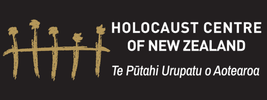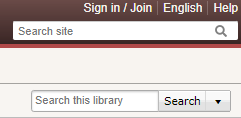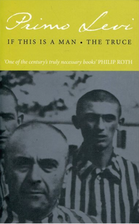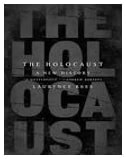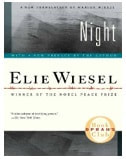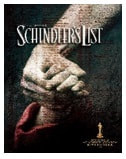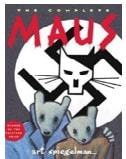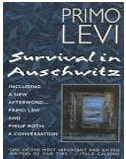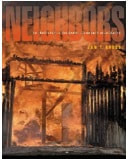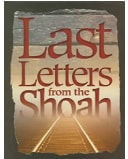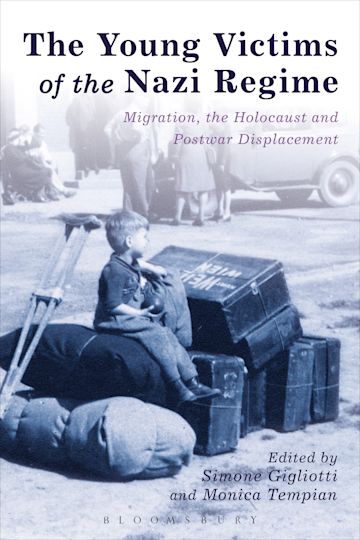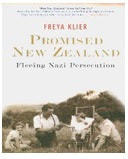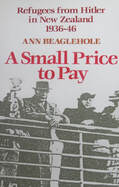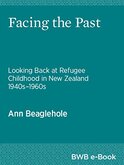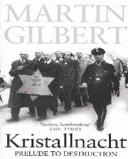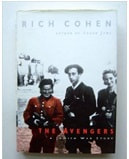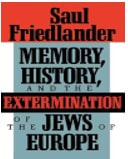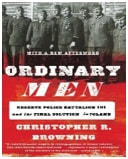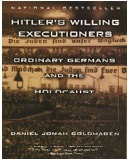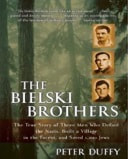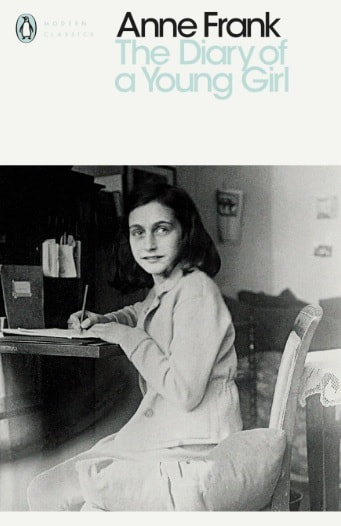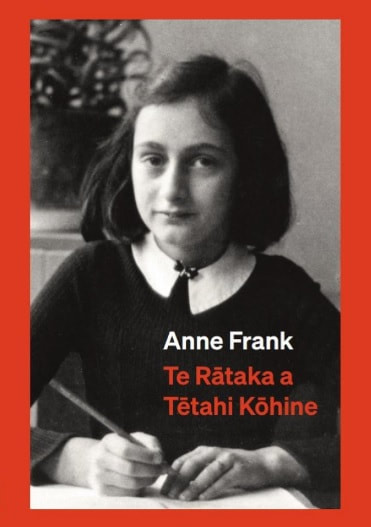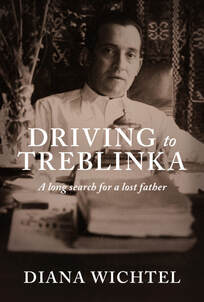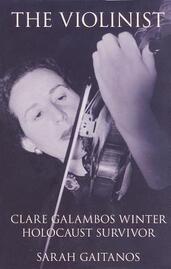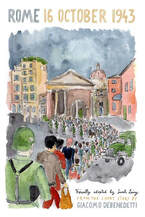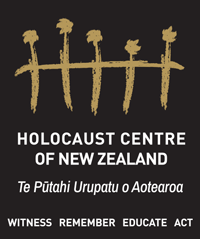Holocaust Resources - Literature & Speeches
BOOKS/ TEXTS ON THE HOLOCAUST - RECOMMENDED READING
|
If This Is A Man / The Truce, By (author) Primo Levi , Translated by Stuart Woolf
Revised ed. 2003 With the moral stamina and intellectual pose of a twentieth-century Titan, this slightly built, duitful, unassuming chemist set out systematically to remember the German hell on earth, steadfastly to think it through, and then to render it comprehensible in lucid, unpretentious prose. He was profoundly in touch with the minutest workings of the most endearing human events and with the most contempible. What has survived in Levi's writing isn't just his memory of the unbearable, but also, in THE PERIODIC TABLE and THE WRENCH, his delight in what made the world exquisite to him. He was himself a "magically endearing man, the most delicately forceful enchanter I've ever known" - PHILIP ROTH In 1947, Italian chemist Primo Levi published one of the most well-known Holocaust survivor books of all time: his account of surviving a year in the Auschwitz concentration camp. |
|
The Holocaust, Laurence Rees, 2017.
Andrew Roberts, Mail on Sunday: “By far the clearest book ever written about the Holocaust, and also the best at explaining its origins and grotesque mentality, as well as its chaotic development”. Antony Beevor: “This landmark work answers two of the most fundamental questions in history - how and why did the Holocaust happen?”. |
|
The Complete Maus, Art Spiegelman, 1996.
The Pulitzer Prize-winning Maus tells the story of Vladek Spiegelman, a Jewish survivor of Hitler’s Europe and his son, a cartoonist, coming to terms with his father’s story. Maus approaches the unspeakable through the diminutive. Its form - the cartoon (the Nazis are cats/the Jews mice), shocks us out of any lingering sense of familiarity and succeeds in “drawing us closer to the bleak heart of the Holocaust” (New York Times). |
|
Neighbours: The Destruction of the Jewish Community in Jedwabne, Poland. Jan T.Gross, 2002.
"One day, in July 1941, half of the population of a small east European town murdered the other half - some 1,600 men, women and children." This summarises the subject of Neighbours, historian Jan Gross's account of a massacre that occurred in Jedwabne, in north-eastern Poland. Gross describes the atrocities of Jedwabne in unbearable detail. |
|
Last Letters from the Shoah, Walter Zwi Bacharach, 2013.
This is a unique collection of letters uncovered over 60 years – kept by victims’ families and friends, and ultimately collected by Yad Vashem. The letters reflect their hopes and aspirations for the future, the anxieties of the present and bittersweet memories of the past |
|
The Young Victims of the Nazi Regime - Migration, the Holocaust and Postwar Displacement, Simone Gigliotti (Anthology Editor), Monica Tempian (Anthology Editor), 2016
During the Nazi regime many children and young people in Europe found their lives uprooted by Nazi policies, resulting in their relocation around the globe. The Young Victims of the Nazi Regime represents the diversity of their experiences, covering a range of non-European perspectives on the Second World War and aspects of memory. This book is unique in that it places the experiences of children and youth in a transnational context, shifting the conversation of displacement and refuge to countries that have remained under-examined in a comparative context. Featuring essays from an international range of experts, this book analyses the key themes in three sections: the migration of children to countries including England, Canada, Australia, New Zealand, Kenya, and Brazil; the experiences of young people who remained in Nazi Europe and became victims of war, displacement, and deportation; and finally, the challenges of rebuilding lives and representing traumas in the aftermath of war. In its comparisons between Jewish and non-Jewish experiences and how these intersected and diverged, it revisits debates about cultural genocide through the separation of families and communities, as well as contributing new perspectives on forced labour, families and the Holocaust, and Germans as war victims. |
|
A Small Price to Pay: Refugees from Hitler in New Zealand 1936-46, Ann Beaglehole, 1988
For European refugees arriving in the 1930s, New Zealand was in many ways a haven. It wasn't all easy: they came from a continent rich in culture and history to a small isolated country with little social diversity. The immigrants found prejudice and suspicion as well as a place they could one day call their own. But the difficulties were 'a small price to pay' for freedom and survival. A Small Price to Pay tells the story of the refugees' flight to New Zealand, and what they found here. Based on interviews with thirty-two former refugees. |
|
Facing the Past: Looking Back at Refugee Childhood in New Zealand 1940s–1960s, Ann Beaglehole, 1990
In A Small Price to Pay, Ann Beaglehole traced the experiences of European refugees to New Zealand in the 1930s. In Facing the Past she focuses on the lives of a younger generation – the children of those wartime immigrants, whose perceptions and experiences of both the old and the new world were very different from their parents'. |
|
Refuge New Zealand: A Nation's Response to Refugees and Asylum Seekers, Ann Beaglehole, 2013
Unlike people who choose to migrate in search of new opportunities, refugees are compelled to leave their homeland. Typically, they are escaping war and persecution because of their ethnicity, their religion or their political beliefs. Since 1840, New Zealand has given refuge to thousands of people from Europe, South America, Asia, the Middle East and Africa. Refuge New Zealand examines New Zealand's response to refugees and asylum seekers in an historical context. Which groups and categories have been chosen, and why? Who has been kept out and why? How has public policy governing refugee immigration changed over time? Aspects of New Zealand's response to refugees and asylum seekers considered in the book include: the careful selection of refugee settlers to ensure they will "fit in;" the preference for "people like us" and the exclusion of so-called "race aliens;" the desire for children, especially orphans; responses to the increasing diversity of refugee intakes; the balance between humanitarian, economic and political considerations; and the refugee-like situation of Maori. As the book also shows, refugees and asylum seekers from overseas have not been the country's only refugees. War, land confiscations and European settlement had made refugees of Maori in the nineteenth and early twentieth century, with displacement and land loss contributing to subsequent Maori social and economic deprivation. Available from our HCNZ SHOP |
|
Hitler’s Willing Executioners – Ordinary Germans and the Holocaust, Daniel Goldhagen, 1992.
This ground breaking international bestseller lays to rest many myths about The Holocaust: that Germans were ignorant of the mass destruction of the Jews, that the killers were all SS men and that those who murdered Jews did so reluctantly. |
|
The Diary of a Young Girl, The Definitive Edition, Anne Frank, 2000
Anne Frank's The Diary of a Young Girl is an inspiring and tragic account of an ordinary life lived in extraordinary circumstances that has enthralled readers for generations. This Penguin Classics edition is edited by Otto H. Frank and Mirjam Pressler, translated by Susan Massotty, and includes an introduction by Elie Wiesel, author of Night. Available from our HCNZ SHOP |
|
Te Rātaka a Tētahi Kōhine (The Diary of a Young Girl, in te reo Māori), Anne Frank, translated by Te Haumihiata Mason, 2019.
"This book is a very welcome addition to the literature of te reo Māori. A strength of the Māori language is that it developed within a story-telling culture. Its many narrative forms lend themselves to stories such as this and the capturing, in Māori, of the authentic voice of the writer." - Professor Rawinia Higgins, Chairperson of Te Taura Whiri i te Reo Māori / Māori Language Commission. "This book is a gift from Anne Frank to the world and to coming generations of New Zealanders to read it in te reo Māori. I commend Te Haumihiata for the beautiful translation and the publishers who have made this possible." - Ngahiwi Apanui, Tumuaki/Chief Executive, Te Taura Whiri i te Reo Māori/Maori Language Commission. Available from our HCNZ SHOP in paper back and eBook. |
|
Driving to Treblinka, Diana Wichtel, 2017
Diana Wichtel was born in Vancouver. Her mother was a New Zealander, her father a Polish Jew who had jumped off a train to the Treblinka death camp and hidden from the Nazis until the end of the war. When Diana was 13 she moved to New Zealand with her mother, sister, and brother. Her father was to follow. Diana never saw him again. Many years later she sets out to discover what happened to him. The search becomes an obsession as she painstakingly uncovers information about his large Warsaw family and their fate at the hands of the Nazis, scours archives across the world for clues to her father’s disappearance, and visits the places he lived. This unforgettable narrative is also a deep reflection on the meaning of family, the trauma of loss, and the insistence of memory. It asks the question: Is it better to know, or more bearable not to? |
|
The Violinist : Clare Galambos Winter: Holocaust Survivor, 2011
Reflecting on the experiences of then 20-year-old violin student Clare Galambos, this biography unfolds in 1944 Budapest amidst the harrowing first days after the Nazi occupation. The account details how the subject managed a difficult journey home only to be transported to Auschwitz Birkenau with the rest of her town's Jewish population. Galambos' time spent in slave labor is illustrated along with her return to Hungary after the war and her eventual departure for New Zealand. The recollection concludes with the subject's significant contributions to the country's music, touching on her career with the New Zealand Symphony Orchestra. Drawing on memoirs, interviews, and historical research, this is an inspiring portrait of wartime survival and artistic achievement. Available from our HCNZ SHOP |
|
Rome, 16 October 1943
Sarah Laing's visual adaptation of Giacomo Debenedetti's 1944 short story, 16 October 1943, retelling the roundup and deportation of Rome’s Jews. ISBN 978-0-473-45544-6 Giacomo Debenedetti’s 16 October 1943 is one of the best and most accurate eyewitness accounts of the shockingly brief and efficient roundup of more than one thousand Roman Jews from the oldest Jewish community in Europe for the gas chambers of Auschwitz. |
Other Key Readings
Ann Beaglehole - Jewish Refugees in New Zealand
A history of New Zealand immigration policy post-war.
Historians’ Interpretations of the Holocaust
A summary of the key interpretations, particularly the intentionalist vs. functionalist arguments.
Traditional Hatred of Judaism
A summary of Jewish history in Europe and the origins of anti-Semitism.
The Minutes of the Wannsee Protocol
A group of leading Nazi officials involved with the implementation of measure involving Jews came together at a villa outside Berlin to plan the mass murder of European Jewry. The Wannsee Conference lasted a mere hour. It approved the programme to kill the approximately 11 million Jews living in Europe, breaking the numbers into Jewish populations country by country.
Speeches
Ann Beaglehole - Jewish Refugees in New Zealand
A history of New Zealand immigration policy post-war.
Historians’ Interpretations of the Holocaust
A summary of the key interpretations, particularly the intentionalist vs. functionalist arguments.
Traditional Hatred of Judaism
A summary of Jewish history in Europe and the origins of anti-Semitism.
The Minutes of the Wannsee Protocol
A group of leading Nazi officials involved with the implementation of measure involving Jews came together at a villa outside Berlin to plan the mass murder of European Jewry. The Wannsee Conference lasted a mere hour. It approved the programme to kill the approximately 11 million Jews living in Europe, breaking the numbers into Jewish populations country by country.
Speeches
